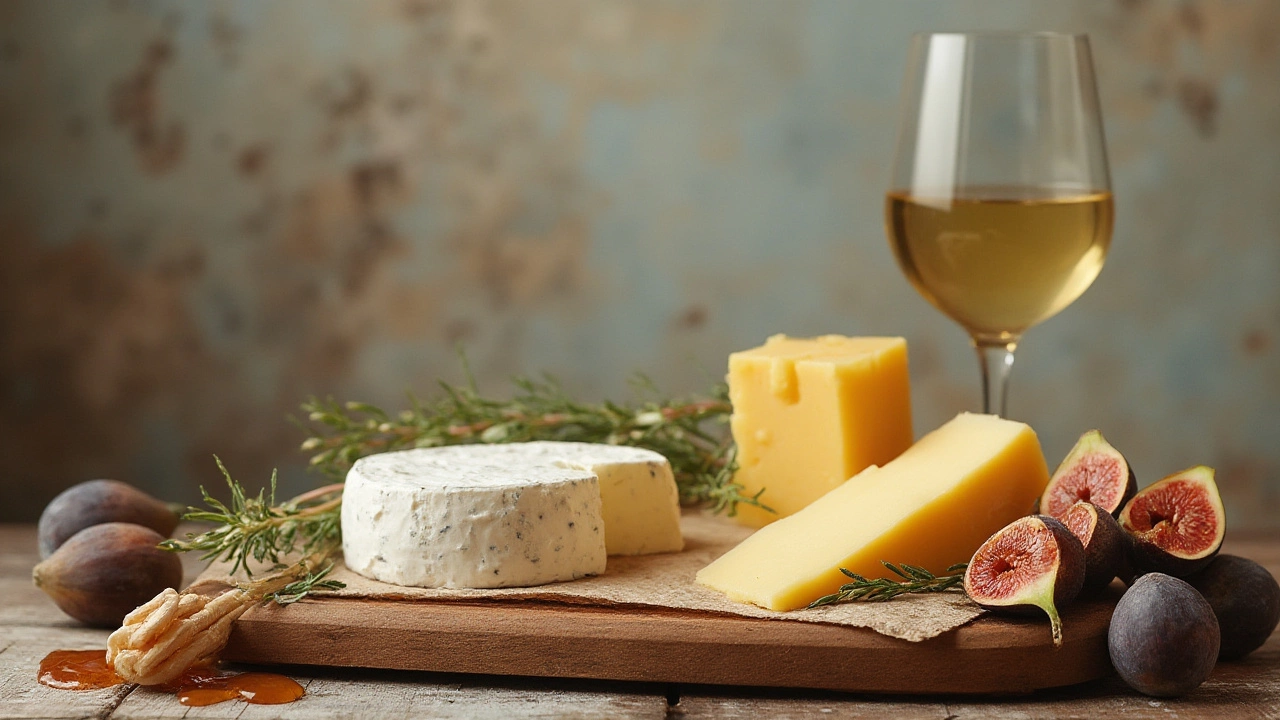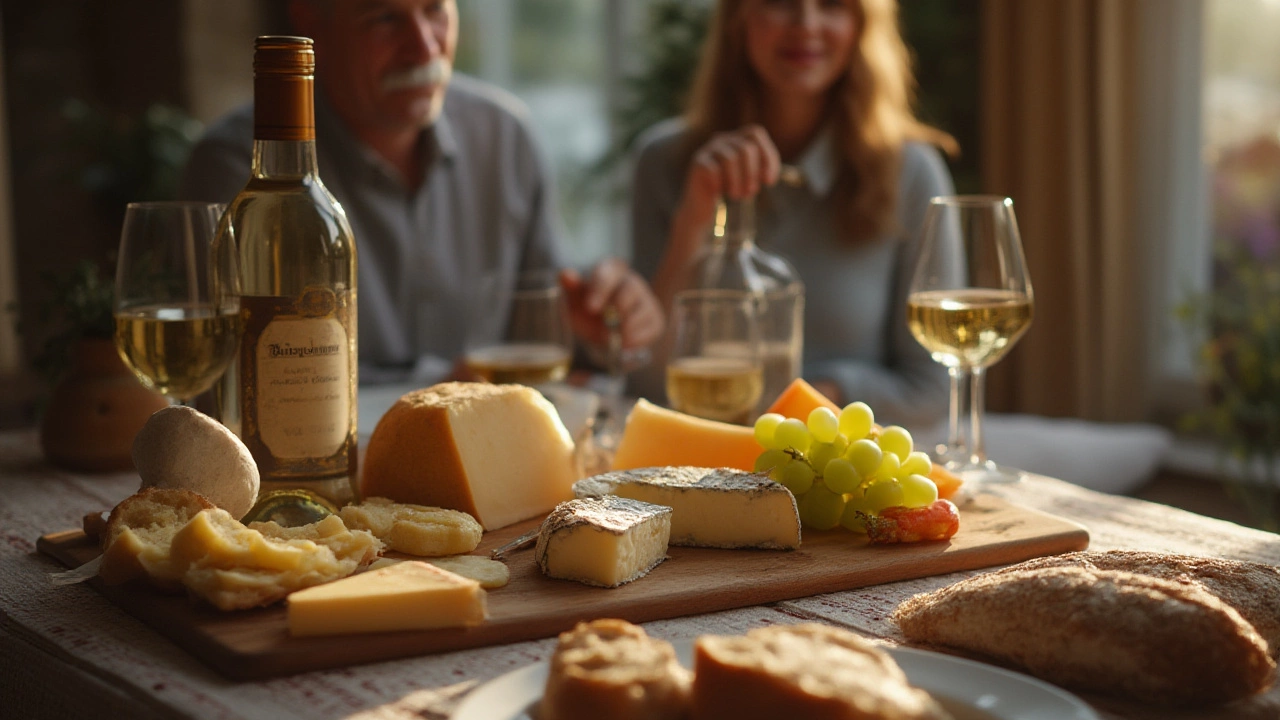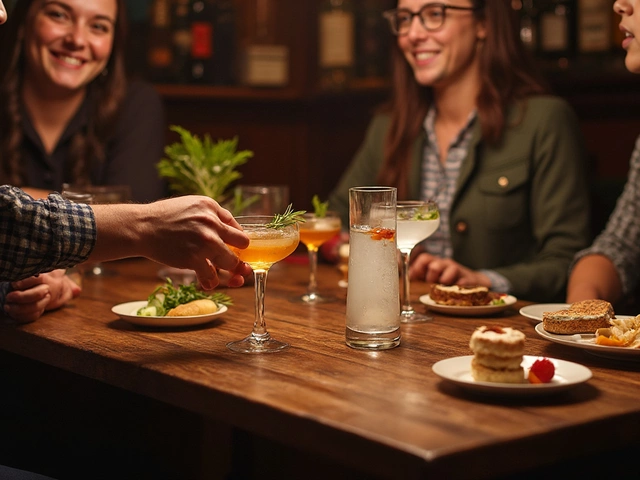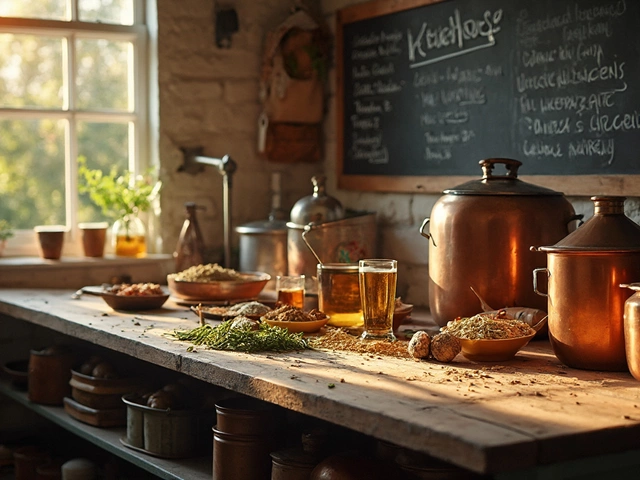Chardonnay and cheese. Most people know they go together, but ask ten folks what cheese you should serve and you’ll get as many answers. Chardonnay’s all over the map—rich and creamy from California, steely and mineral from Chablis, and somewhere in between from places like Australia and Chile. You can’t just grab a block of cheddar and call it a night if you want the best experience. Suddenly, snacking seems like rocket science.
Let’s clear the clutter and dig into what makes this grape click with certain cheeses, what you need to avoid, and why it all matters more than you’d guess at first sip. It’s not just about taste—there’s chemistry at play here. Get the pairing right, and both the wine and cheese come alive. Get it wrong, and even a world-class bottle can end up tasting flat, sour, or oddly boozy.
Understanding Chardonnay’s Personality
Forget everything you’ve heard about Chardonnay being “basic.” This grape’s the chameleon of the wine world. It grows just about everywhere and picks up flavors from its home, the winemaker, and the way it’s aged. That’s why French Chablis tastes so different from a buttery Napa Chardonnay, and why some bottles land like lemon zest while others roll on like velvet custard.
Here are a few styles you’ll run into, each playing its own game with cheese:
- Unoaked Chardonnay: Crisp, clean, high-acid, full of apple, citrus, sometimes hinting at crushed rocks or green herbs. Think Chablis in France or cooler Aussie wines.
- Oaked Chardonnay: Creamy, round, layered with vanilla, caramel, toasted nuts and ripe tropical fruit. California’s best-known for this smooth operator, with Australia, Burgundy and South Africa offering up their own spins.
- Blended Styles: Some winemakers split the difference: part oak, part stainless steel, so you get fruit and freshness with a whiff of richness.
That variety is both exciting and tricky for cheese lovers. Rich, buttery wines can smother delicate cheese, while crisp, zippy Chardonnays will clash with sharp blue or salty aged cheese. It’s about balance. Yep, like a see-saw—too much weight on one side and the other crashes down.
There’s actual data on how food alters flavor perception. A study in the American Journal of Enology and Viticulture (2022) looked at how cheese types affect the perception of acidity and fruit in white wines. When people paired oaked Chardonnay with creamy cheese, almost 70% described smoother textures and less sharpness in the wine. Food’s not just an add-on. It changes the way we taste what’s in the glass.
So now you know—the cheese matters just as much as the wine.
Cheeses That Make Chardonnay Shine
The quest for a perfect cheese to go with Chardonnay starts with understanding what the wine is actually like. Here’s a table of popular Chardonnay styles and their best cheese pairings, based on both professional tastings and feedback from hundreds of home cheese boards. Handy, huh?
| Chardonnay Style | Flavor Profile | Recommended Cheeses |
|---|---|---|
| Unoaked (Chablis, cool climate) | Crisp, high acid, mineral, green apple, citrus | Goat cheese (chèvre), Gruyère, Comté, young Pecorino, Brie |
| Oaked (Napa, Australia, warm climate) | Creamy, buttery, vanilla, ripe stone fruit, nutty, mellow acidity | Triple-cream Brie, Camembert, Havarti, aged Gouda, mild blue cheese (double cream) |
| Burgundy (White Burgundy, Meursault) | Mineral, buttery yet balanced, orchard fruit, complex | Chaource, Époisses, Beaufort, Tomme de Savoie, aged Gruyère |
Let’s break down what works—and why.
Goat Cheese (Chèvre): This is probably the single most classic cheese to pair with lean Chardonnay, especially unoaked styles. The tart, bright taste of goat cheese lines up perfectly with the citrusy, mineral notes in a cool-climate Chardonnay. If you’re opening a bottle of Chablis, just get some soft, fresh chèvre, spread it on a baguette, and taste what happens. The tanginess in both the cheese and wine lift each other up—the flavors actually get sharper and cleaner in your mouth.
Triple-Cream Brie and Camembert: Now, for those oaked Chardonnays with all their buttery, creamy weight, reach for a cheese that matches that texture. Triple-cream Brie is like silk—super rich—so it soaks up the wine’s oak and turns it mellow. Try it with a classic Californian Chardonnay after letting the cheese warm to room temp. Havarti is another solid pick here, as is Saint André, a ridiculously decadent French cheese.
Gruyère, Comté, and Alpine Cheeses: Going for something with more umami and nuttiness? Many white Burgundies and more elegant, balanced Chardonnays love a firm, nutty cheese like Gruyère or Comté. These cheeses bring out the fruit and subtle spice in the wine, and the pairing works whether the cheese is young and supple or older and more crumbly. Even a wedge of aged Swiss can play nice with richer, less oaky Chardonnays.
Pecorino and Young Sheep’s Milk Cheeses: These are great with unoaked styles. Pecorino’s herbal notes connect with the citrus in Chardonnay, but the saltiness can highlight acidity—so stick with younger versions and avoid super-aged ones for this match.
Blue Cheeses: Want to walk on the wild side? A double-cream blue cheese (like Cambozola) works surprisingly well with big, creamy Chardonnays. These wines have enough richness to handle the blue’s tang, and a little sweetness on the palate brings balance. Avoid dryer, saltier blues (like Roquefort). Unless you want a taste bud war, stick with milder, creamier options.
There’s no shame in testing and tasting. Run your own experiment with three styles of Chardonnay and three cheeses, blind-test a few friends, and see who comes out top. Sometimes the cheese that “should” work flops, and a random supermarket wedge is the star. Your palate is the judge.

What to Avoid: When Cheese and Chardonnay Clash
There are a few cheese types that get hyped for all wines, but just don’t play nicely with Chardonnay. The main landmines? Salty, sharp, or over-aged cheeses—especially hard sheep’s milk varieties or big blue cheeses—and most supermarket yellow cheddars. Let’s get into why.
First off, Chardonnay (especially unoaked) has two things going—fresh acidity and subtle flavors. Throwing a big, salty cheese into the mix is like cranking the treble on a stereo and wondering where your bass went. Sharp cheddar, Parmigiano-Reggiano, mature Manchego, or anything labeled "aged 18 months" or higher—these guys can wipe out the delicate notes in your wine and leave it tasting tinny, bitter, or thin.
If your Chardonnay is rich, creamy, and buttery, you’d think a big blue or crumbly Stilton would be the perfect match—since a lot of folks love blue with sweet wines. Here’s where things split. Most blue cheeses have a salt kick and wild funk that drowns out lighter Chardonnays. A really ripe brie or a gentle blue like Gorgonzola Dolce? You might get away with it. But Stilton or Roquefort will give you a flavor arm-wrestle—and wine usually loses.
Smoked cheeses are another problem. These taste fantastic with some reds, beers, or whiskey, but their earthy, ashy flavor clashes with Chardonnay’s fresh fruit and creaminess. Unless you’re using a very smoky Chardonnay (rare, but they exist), just skip the smoked gouda or applewood cheddar for this grape.
Why? Sauvignon Blanc, Cabernet Franc, or Riesling can handle sharpness and salt thanks to their punchy acidity, elevated aromatics, or a little sweetness. Chardonnay is about texture and subtlety—you want cheese that brings out its creaminess, not fights it.
Tips for an Unforgettable Chardonnay and Cheese Night
Ready to throw a wine and cheese party—even if it’s just two people and a cutting board? Here’s how to keep it simple, enjoyable, and basically foolproof. First, pick three cheeses: one soft (Brie or Camembert), one semi-firm (Gruyère or Comté), and one tangy (chèvre). This gives you a full range of flavors and textures, and something for everyone at the table.
Let your cheeses warm up a bit. Cheese straight from the fridge is like bringing out wine at the wrong temperature—it dulls flavors, mutes texture, and you miss half the fun. Twenty minutes on the counter is usually perfect. Slice your cheese right before eating for the freshest taste.
Have something neutral for a palate cleanser. Plain baguette, simple crackers, or even apple slices work. Steer clear of anything loaded with garlic, spice, or strong flavors. Remember, the goal is to let the wine and cheese do the talking.
Pour smaller servings of different Chardonnays. If you’re with friends, split a few bottles or pick up half-size bottles. A blind tasting is a fun twist: wrap up the bottles in foil, pour, and vote for your favorite combo. You might just be surprised by what your taste buds prefer—there’s no “right” answer but your own.
Take notes. Sounds geeky, but jotting down a line about what worked and what flopped means you keep getting better. Make a habit of writing the name of the wine and cheese, and a quick “win” or “avoid” note.
If you want to go beyond simple pairings, here are a few advanced tips:
- Add honeycomb or dried apricots to soften strong cheeses.
- Try toasted nuts (almonds or pecans) with oaked Chardonnay—they echo the wine’s nuttiness.
- Charcuterie is tempting, but avoid overly spicy meats—the fat and salt can overwhelm the Chardonnay.
- Fresh herbs like chives sprinkled on goat cheese can amp up the wine’s freshness.
Every bottle, every wedge of cheese is a little different. That’s part of the adventure. If you stumble onto a combo that just stuns you, make a note of it—and share it. Wine and cheese aren’t meant for snobs or experts. The best pairings start with open bottles, messy boards, and plenty of real conversation. The rest will take care of itself.


